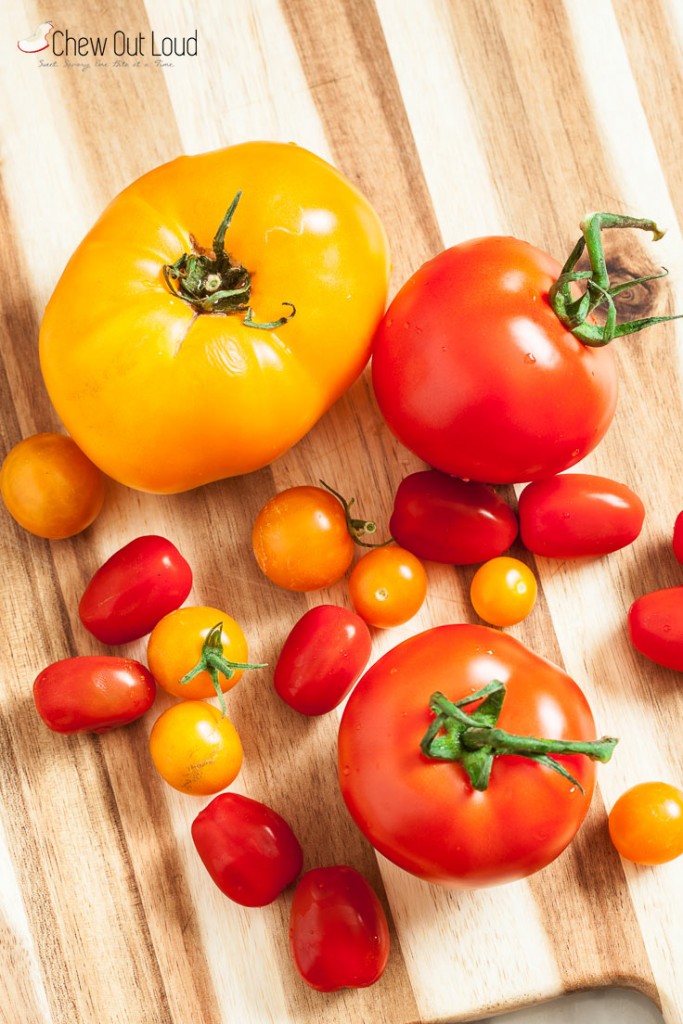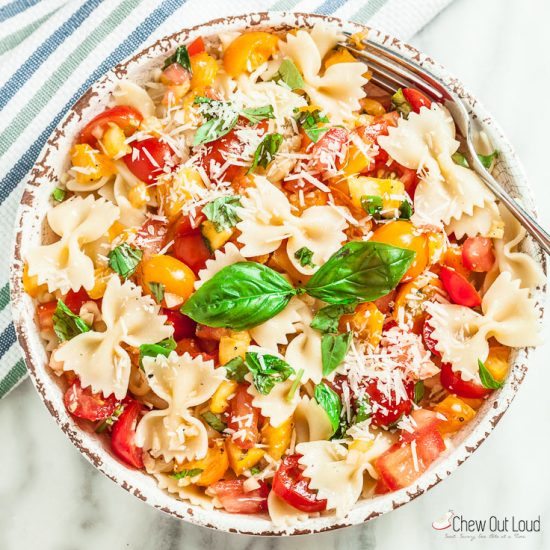How to Make Fresh Produce Last Longer
- By Amy Dong
- Published Apr. 16, 2020
- Updated Dec. 8, 2021
Make the most out of your fresh produce. Try these simple tips to keep your produce from spoiling before you get a chance to enjoy them.
- Bananas: Buy one or two yellow bananas that you can eat now, and get greener bananas to keep on the counter to continue ripening. Once bananas ripen, place them in fridge to keep them fresh longer. The peel will turn brown in the fridge, but the banana will look normal underneath the peel, as long as the bananas weren’t bruised. Peel any overripe bananas and wrap airtight with cling wrap to place in freezer for anytime-smoothies. Of course, overripe bananas are perfect for The Perfect Banana Bread.
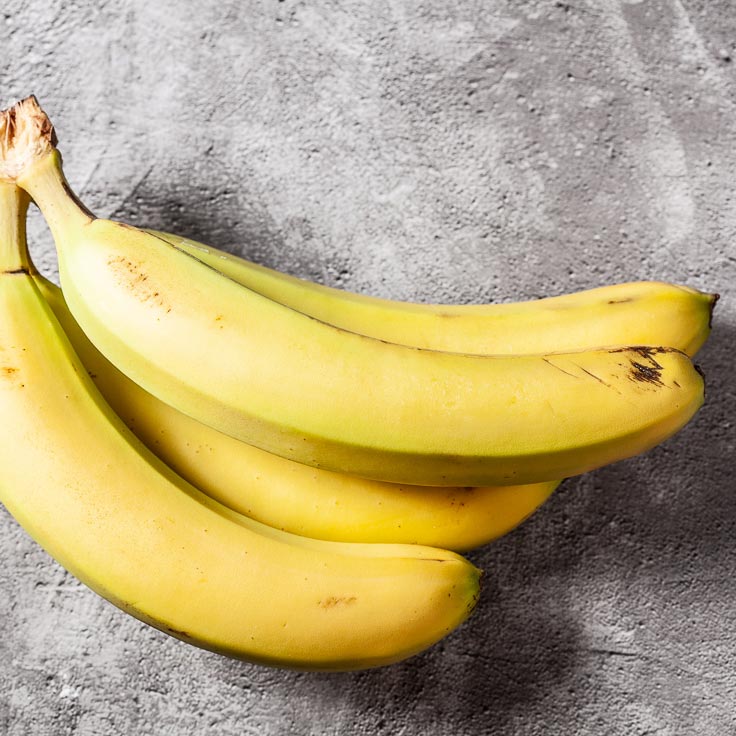
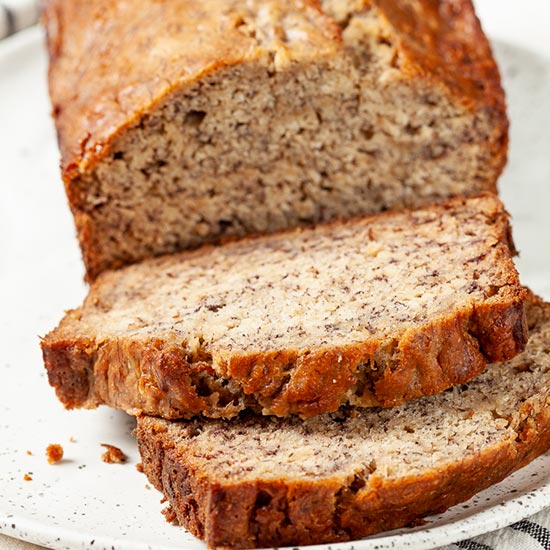
2. Pears, Apples, Peaches, and Nectarines: Firm, unripe fruits can last up to several weeks if they aren’t bruised and are stored well. Though it’s common to let them ripen on counter prior to refrigeration, we consistently found that these fruits last much longer when placed in fridge when they’re very firm. Place unripe fruits in loose plastic bags in fruit drawer of your refrigerator. Ripen desired amount of fruit in a sealed paper bag 2-3 days prior to consuming.
Ripe fruit can be peeled/sliced and frozen in a single layer pan, followed by transferring to sealed freezer bag for smoothies. No need to throw out apples past their prime, as they can be used for Apple Butter which lasts a long time and tastes delicious on toast.
The humble pear shines brightly in this Honey Pear Bread (apples can be substituted.)
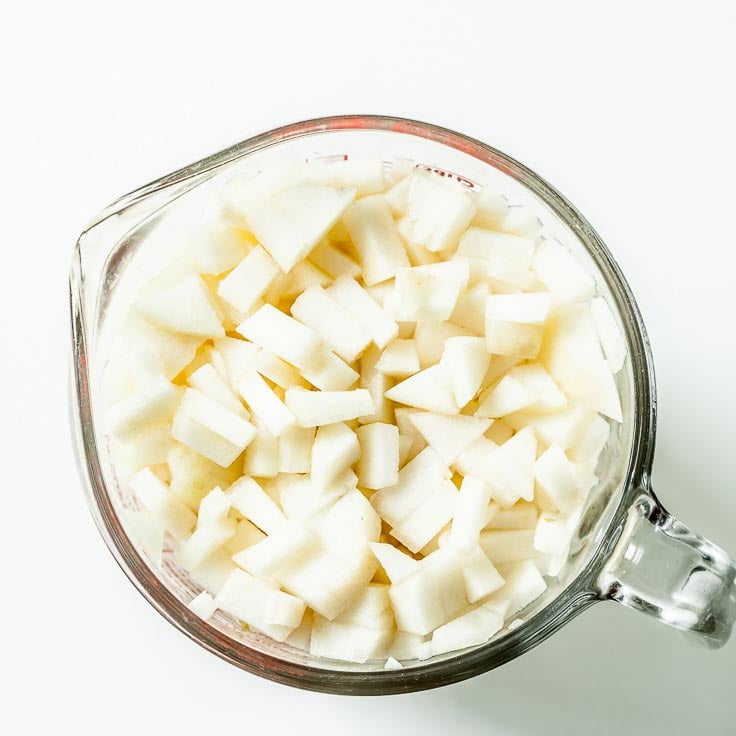
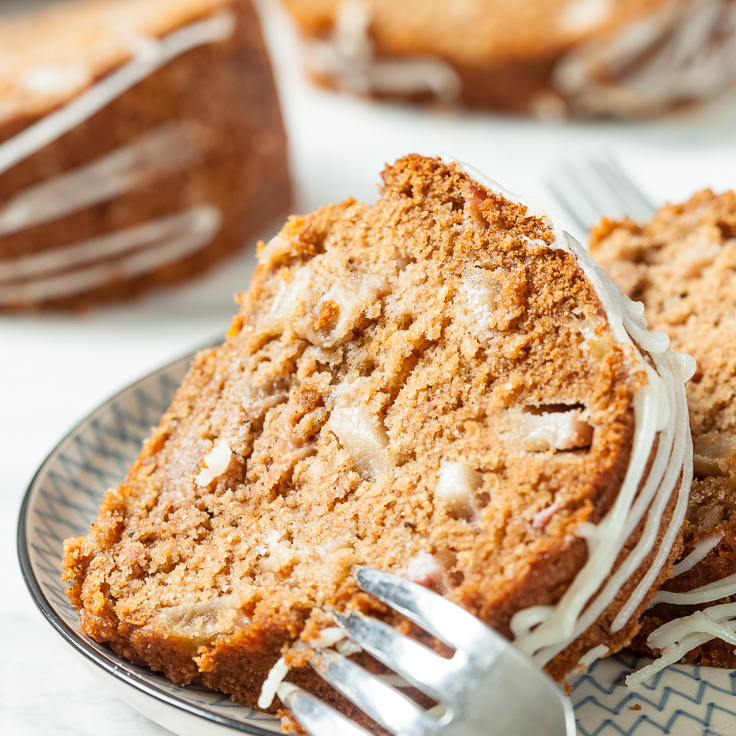
3. Parsley, Thyme, and many other herbs: Many fresh herbs such as parsley, thyme, rosemary, and cilantro will last much longer when stored well: loosen herbs from any twist ties they may have come with. Rinse clean, pat dry the leaves, remove any wilted ones, and trim the stems about 1/2-inch.
Place stems in a glass filled with partway with water, as you would a bouquet of flowers. Avoid submerging leaves in water. Cover the leaves with a loose plastic bag to prevent them from drying out. Many hardier herbs such as parsley, thyme, and rosemary can be kept this way in the fridge for weeks, with the exception of basil, which prefers room temperature.
A great way to use up fresh herbs is to blend them with olive oil in a Pesto Sauce, which can be divided into portions and frozen airtight. Feel free to substitute half of the basil with parsley, or toss in a bit of cilantro for zest.
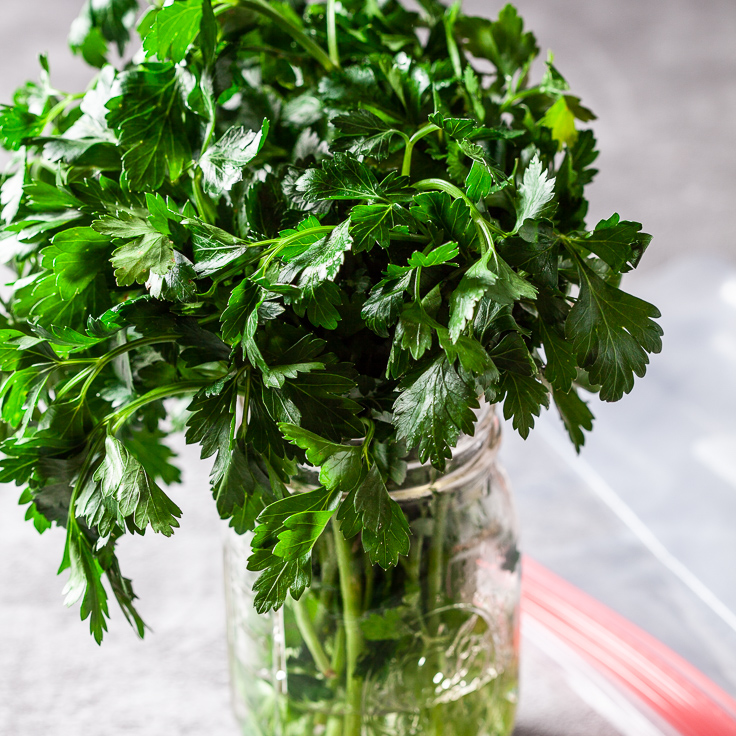
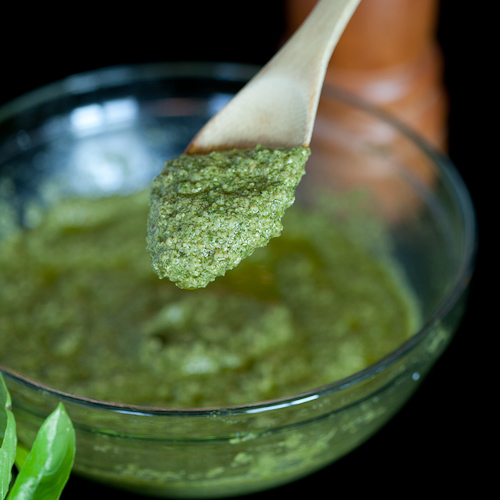
4. Green Onions and Chives: Wash green onions and store them upright in a glass filled with about an inch of water, just enough to keep roots submerged. Store-bought chives that cut won’t have roots, but can be stored the same way. Replace with fresh water each day to prevent mold or rot.
Green onions and chives do well at room temperature with no plastic covering needed. Snip off what you need from the top, and watch as new green stalks grow.
Sliced green onions or chives can be kept fresh for 2-3 days in a bowl lined with paper towel and covered tightly with cling wrap.
Our savory Scallion Asian Pancakes and Cheddar Chive Scones are both deliciously flaky and require no yeast.
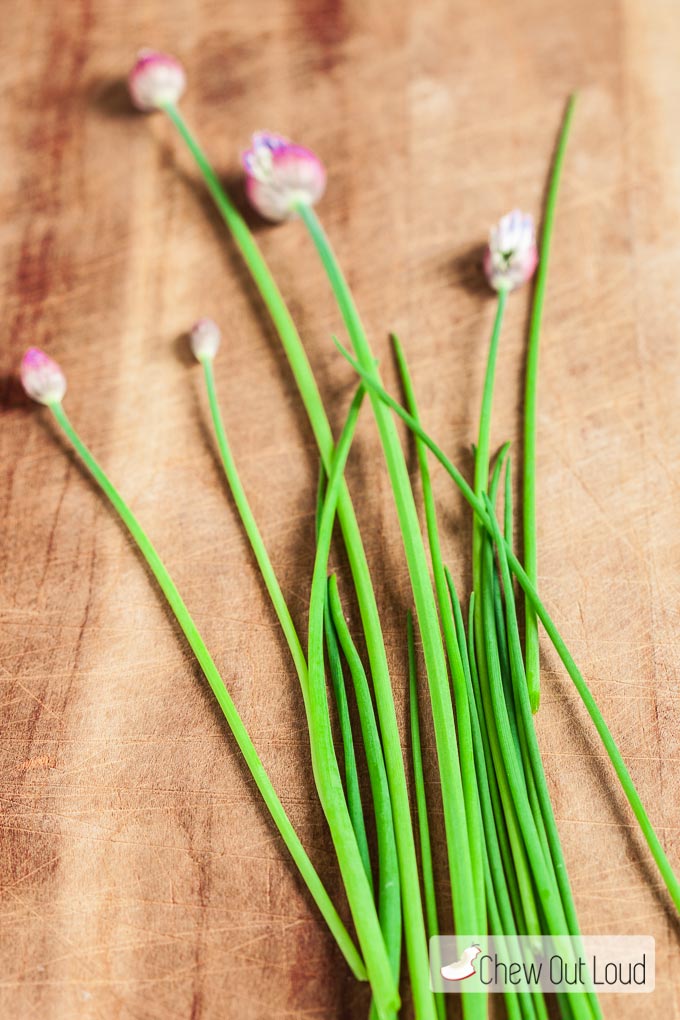


5. Cabbage and Brussels Sprouts: Whole cabbage keeps exceptionally well when stored correctly, and is a fantastic vegetable to buy in place of more fragile leafy greens. Brussels sprouts on-the-stalk will stay fresh much longer than individual brussels sprouts. Store cabbage and brussels sprouts in plastic bag in your refrigerator’s crisp vegetable drawer. Do not wash or get them wet until ready to use.
If you won’t be using an entire cabbage all at once, cut it in half and tightly wrap the other half with plastic wrap to keep dry and fresh longer.
Try our Kale and Brussels sprouts salad, which can be made ahead of time and won’t wilt on you. Roasted Brussels Sprouts and Butternut Squash or Sriracha Roasted Sprouts are delicious sides.
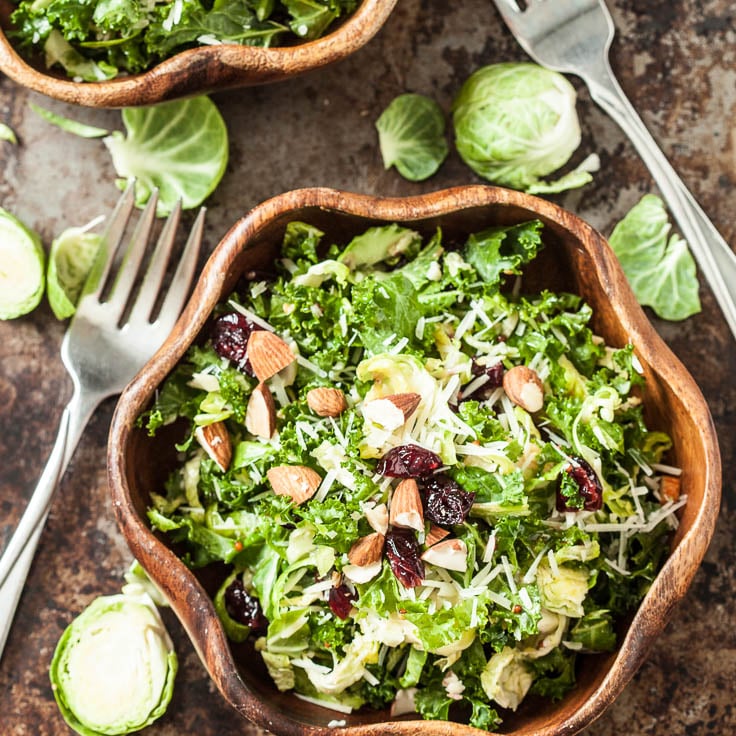
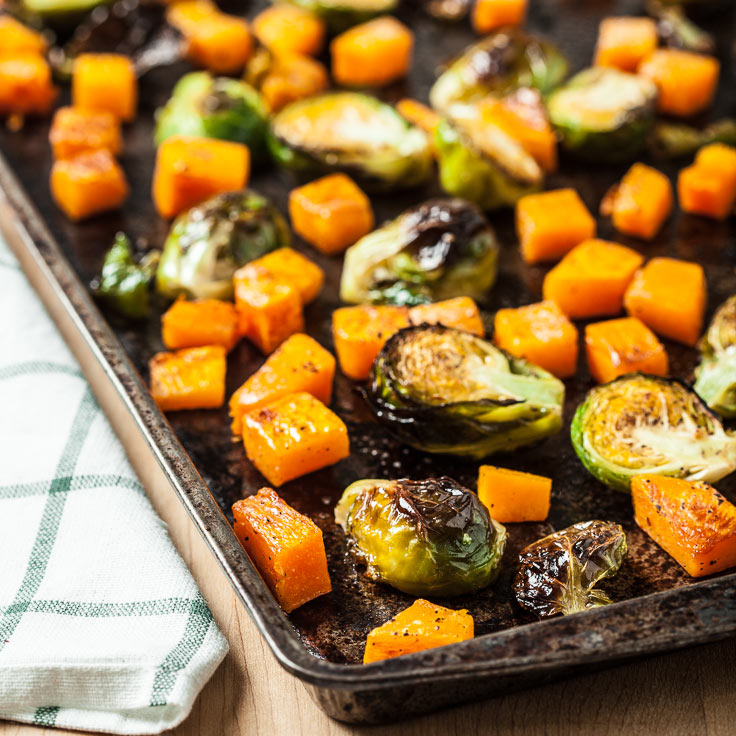
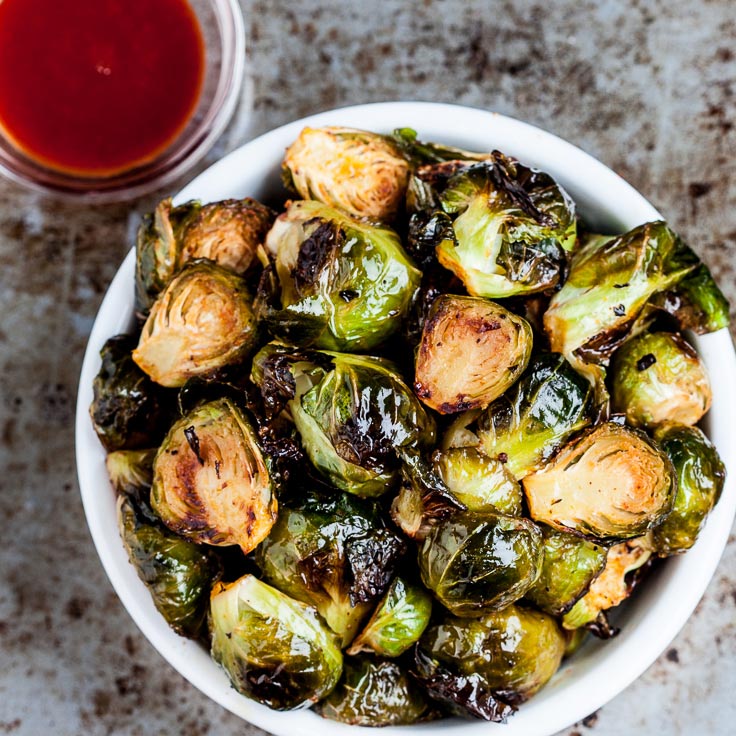
6. Spinach and Kale: Because whole kale and whole mustard greens are hardy greens, they can be kept for many days in a plastic bag in the crisp vegetable drawer of your fridge. Cut leaves of kale and mustard greens can be kept in a plastic bag lined with paper towel.
Spinach should be used as soon as you can after buying, as it wilts easily. To save spinach (or any leafy greens) for later use, chop leaves and remove moisture. Place in airtight freezer bags (squeeze out all that air) and freeze for a month or longer. Frozen leafy greens are great for adding to soups and stews like this Chicken Kale Bean Soup… full of nutrition and flavor.
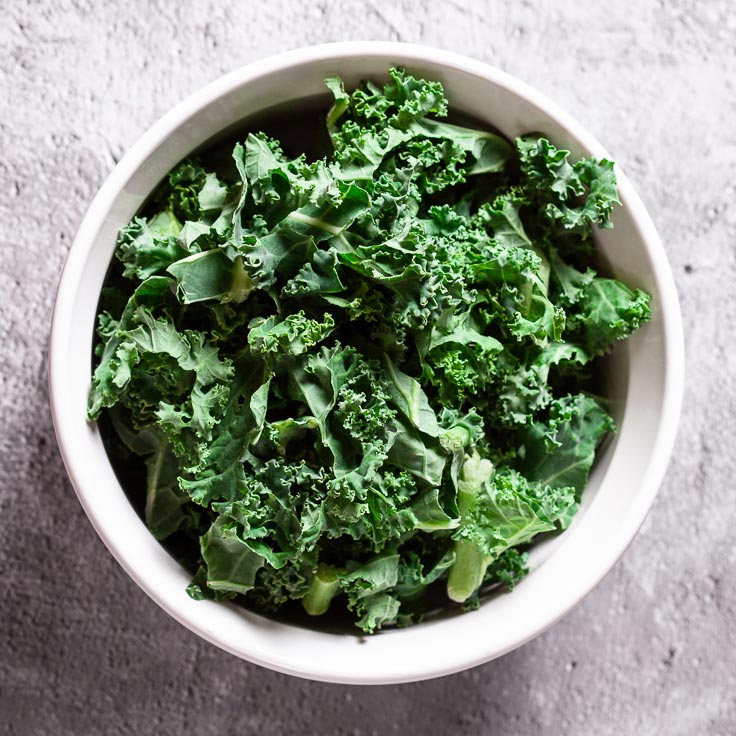

7. Celery: Keep your celery fresh and crisp for a long time by keeping them whole and wrapped tightly in foil. Your fridge’s crisper drawer is ideal here, and keep separate from ethylene producing fruits like apples, tomatoes, or stone fruits.
If your celery starts wilting out a bit, try reviving it by running it under cold water and placing damp stalks in plastic bag in fridge. Interestingly, this works well for re-plumping certain other greens such as bok choy.
Sliced celery pieces keep well when placed in a sealed container with some fresh water. Celery provides the aromatic base for comforting, healthyish Turkey Bolognese. Feel free to sub with shredded chicken or any ground meat.
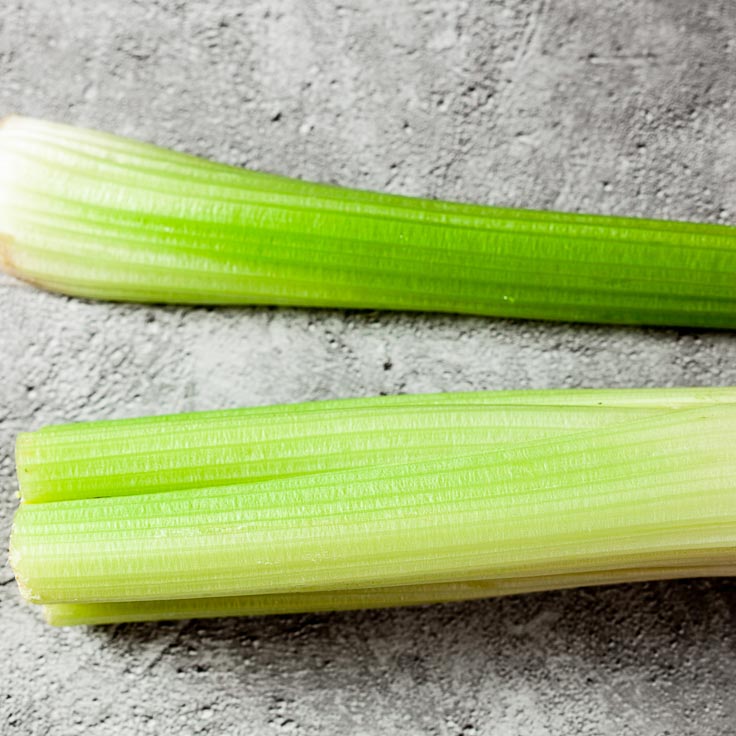
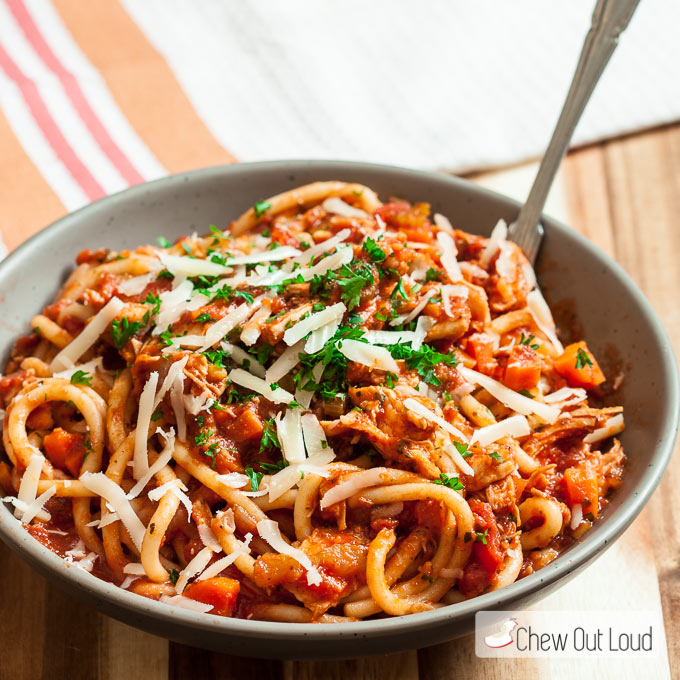
8. Whole Brown/Red Onions and Shallots: Unbruised, unpeeled, firm whole onions of the non-sweet variety can keep for a very long time (sweet varieties have a shorter life span.) Store them in a cool, dry, dark space that’s well ventilated. If you have cool, dark basement, that would work perfectly.
Store your whole onions in a mesh or cloth bag to allow ventilation and prevent mold. A cloth-lined cardboard box is another good option.
Chopped onions/shallots can be kept in a well-sealed glass container in fridge for many days, which comes in handy for Restaurant Style Salsa. Chopped onions can be frozen airtight and used in stews or braises. We love this family favorite Beef Stew.
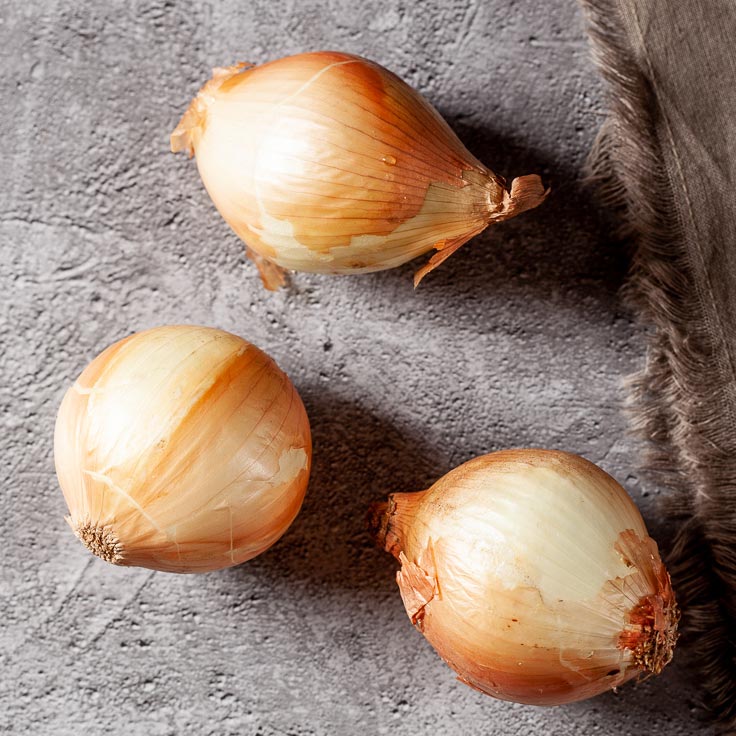
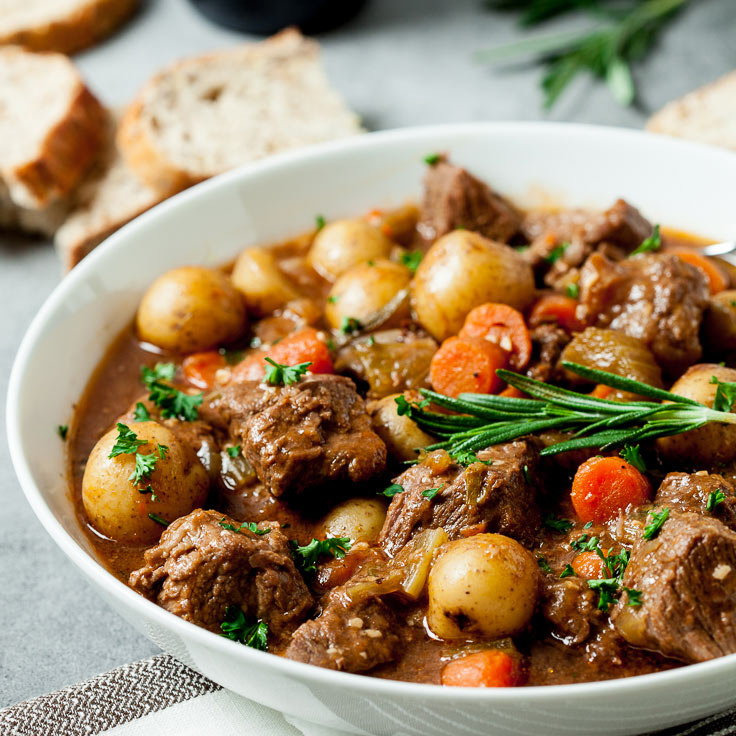
9. Romaine Lettuce: Whole romaine lettuce keeps much longer than pre-cut leaves. Place dewy whole lettuce in a loose plastic bag in your refrigerator’s crisp vegetable drawer, away from ethylene-producing produce such as apples, onions, and stone fruits.
Wash and cut off only what you need starting from the top, as needed. To keep already-chopped lettuce fresh longer, keep them in a plastic bag lined with paper towel and store in your fridge’s crisper drawer. Try this homemade Caesar Salad with Creamy Caesar Dressing.
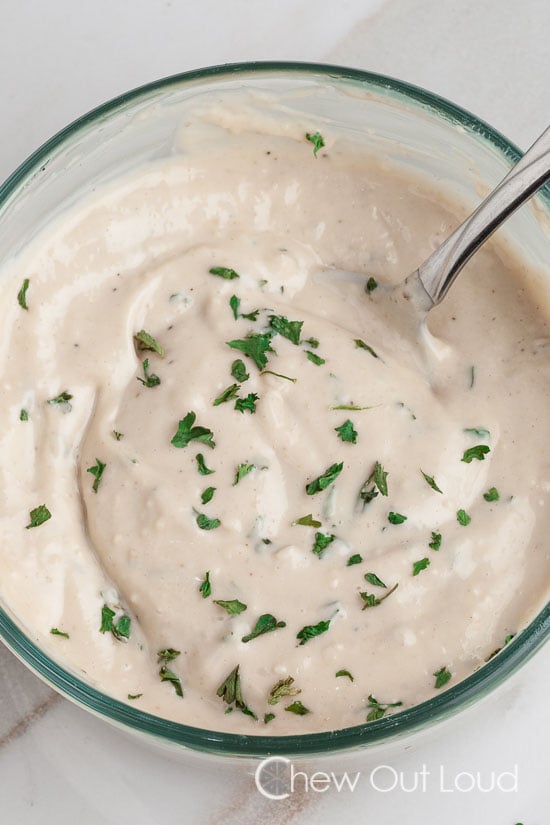
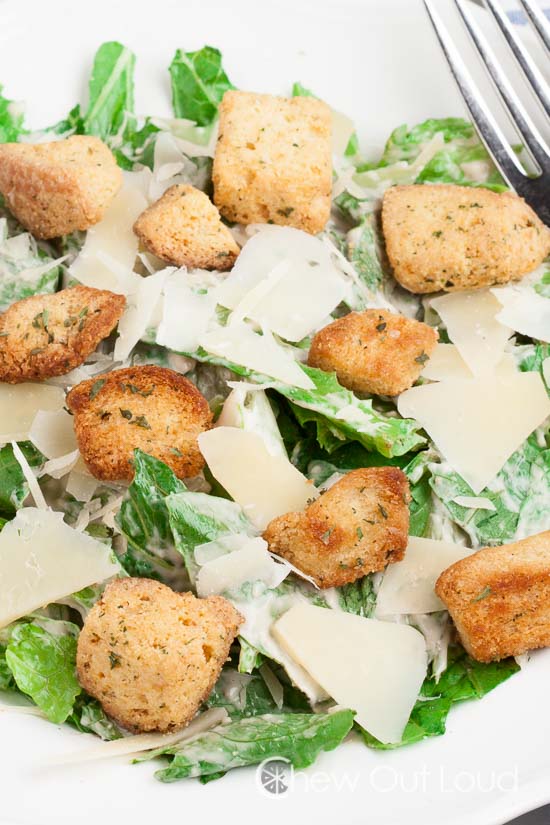
10. Asparagus: Buy the freshest, firmest asparagus spears you can find. Inspect spear tips to ensure none of them have a wet look, which can mean they’ve already begun to rot.
Loosen asparagus from any rubber bands or ties, if they came in a tied-up bundle. Trim 1-inch off the stem and place in a glass container of water; you only need enough water to submerge the stem bottoms. Keep in fridge on an open shelf, without plastic covering. If your asparagus was quite fresh to start with, it will last 1-2 weeks when stored this way.
Tip: Choose thinner stemmed asparagus vs. thick ones. Thinner ones are younger and the stems will be much more tender and edible.
Try this Asparaguss Strawberry Grain Salad. We used farro, but you can sub with any other grains, including quinoa and brown rice. Feel free to go with other fruits such as blueberries or apples.
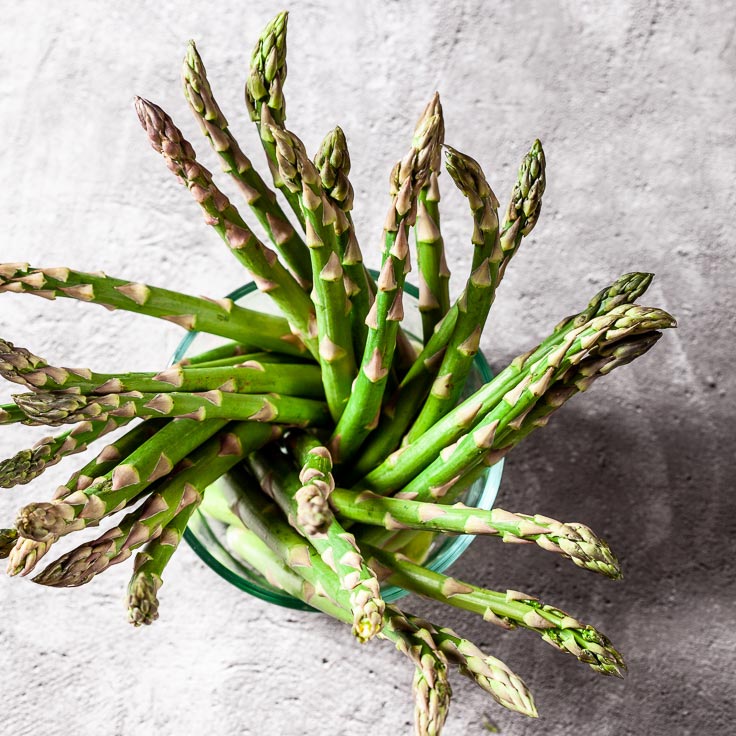
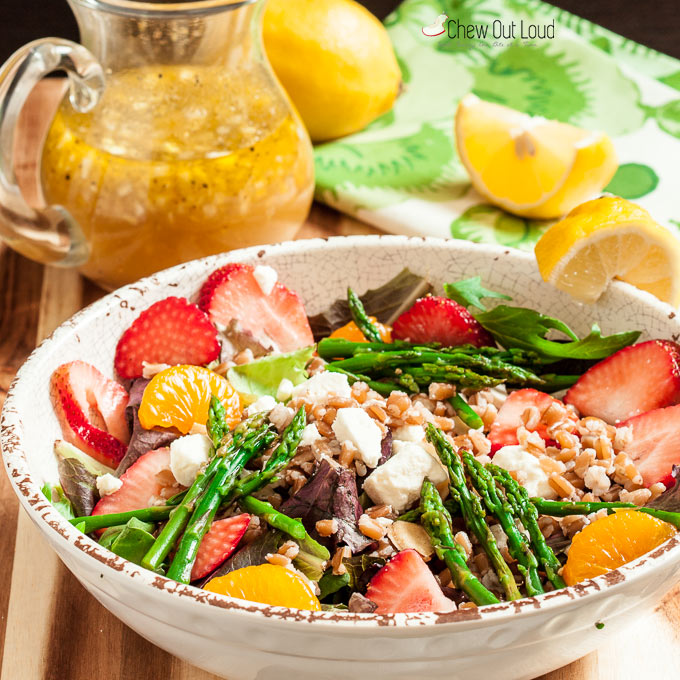
11. Bell Peppers: Choose various colors of bell peppers that are smooth and firm. Wrinkles in the skin mean the peppers are on their way out, so avoid ones with wrinkly skin or soft spots.
Wash, dry thoroughly, and keep in a plastic bag in the crisper drawer of your fridge. Bell peppers can stay fresh for over a week that way.
Once sliced, you can keep them in an airtight glass container for several days of easy use in salads and stir fry. Bell peppers can be chopped and frozen in an airtight freezer bag for up to a month; frozen peppers are best for stews and chili, as they will have lost their crunch.
Try a variety of freshly sliced bell peppers in deliciously easy Sheet Pan Fajitas.
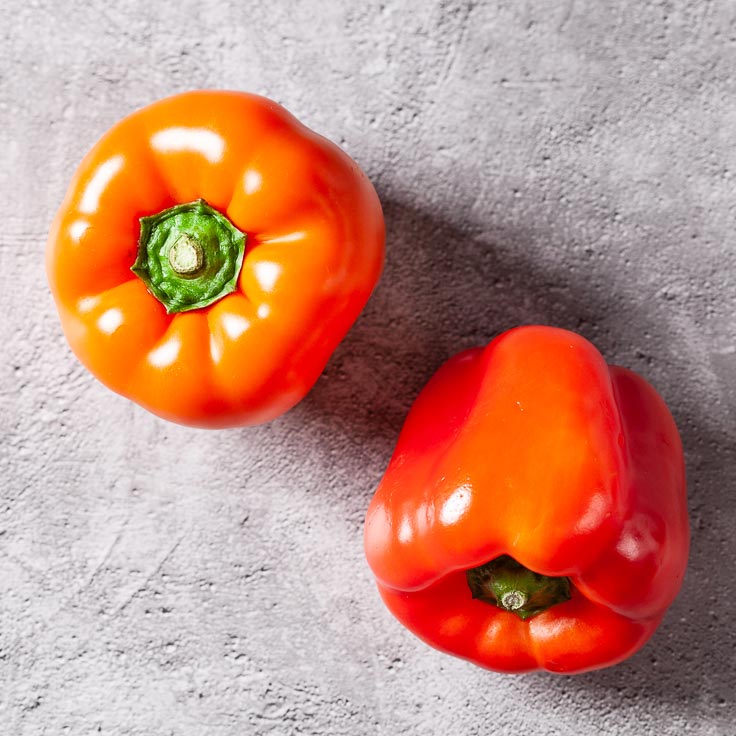

12. Tomatoes: It’s often advised to let tomatoes ripen on counter prior to placing them in the fridge. That’s a good idea if you know you will use them up quickly. However, because ripe tomatoes will not keep long even in the fridge, we prefer increase tomato longevity by keeping them in the refrigerator’s crisper drawer while they’re still under-ripe. Keep separate from other ethylene-producing items (i.e., avocado, apples, onions.).
About 2-3 days prior to using, ripen only what you’ll use by placing them in a paper bag with an apple or banana, which helps to hasten the ripening.
Tomatoes should only be sliced when ready to use, as they don’t keep well once cut. Of course, you can ensure no tomato goes to waste by tossing them into a hearty pasta sauce to freeze for easy future dinners.
Also try this super easy no-cook tomato garlic sauce one of our favorite healthy and simple way to enjoy sweet, ripe tomatoes.
